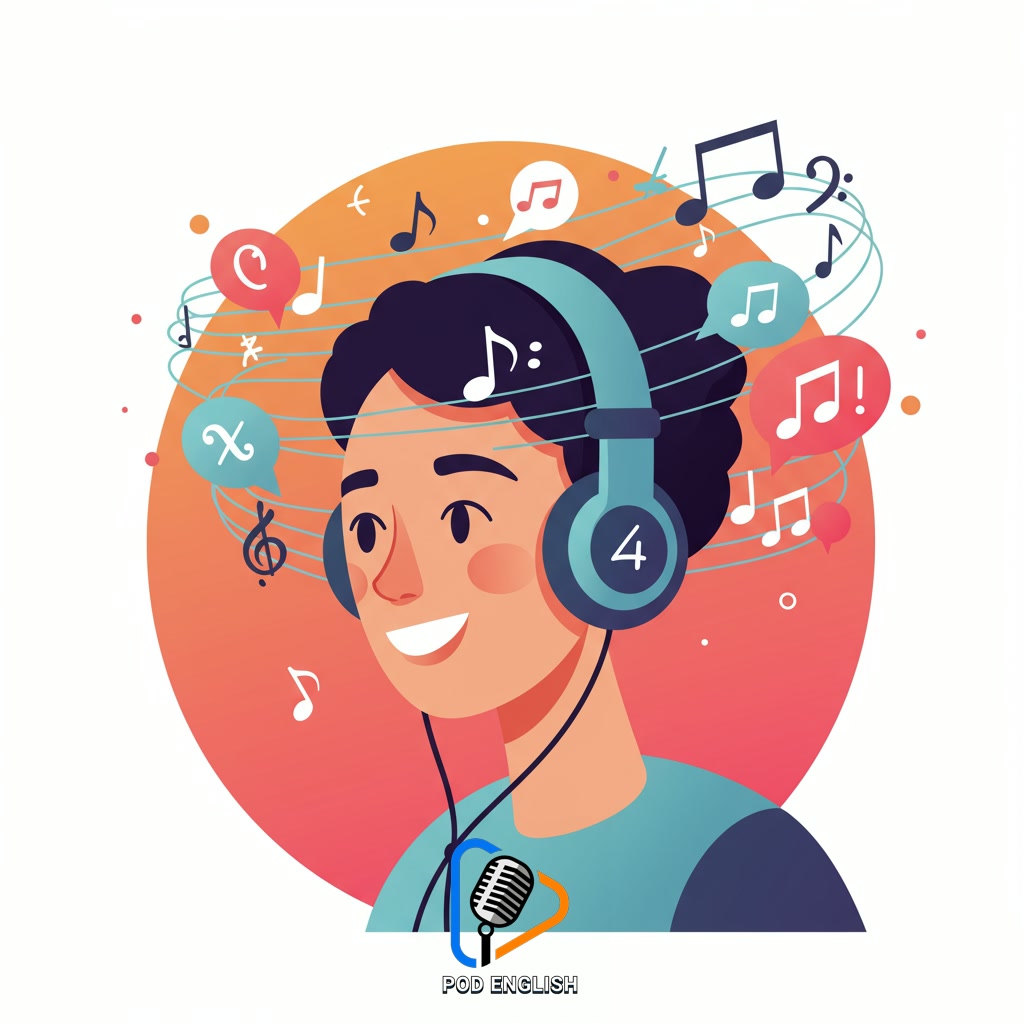Learn English
Learn English with Songs: Make Language Learning Fun and Highly Effective

This content explores the advantages of using songs to improve English proficiency. It outlines how music can effectively assist with vocabulary building, listening skills, and pronunciation. This method offers a highly engaging and productive way to enhance language acquisition.
Table of Contents
- Section 1: Introduction: Why Learn English with Songs?
- Section 2: The Brainy Benefits: How Music Boosts English Learning
- Section 3: Skills to Improve: Listening, Vocabulary, Pronunciation, and More
- Section 4: A Practical Guide: How to Use Songs for Effective Learning
- Section 5: Picking the Right Tunes: Selecting Songs for Your Level
- Section 6: Maximizing Your Results: Tips and Strategies for Success
Section 1: Introduction: Why Learn English with Songs?
Welcome to an exciting way to boost your English skills! You might wonder, “Why learn English with songs?” The answer is simple yet powerful: it makes learning enjoyable and highly effective. Traditional methods can sometimes feel repetitive, but music brings a dynamic and engaging element to language study. When you listen to songs, you’re exposed to natural pronunciation, everyday vocabulary, and common phrases in a memorable context. The rhythm and melody help new words and grammar patterns stick in your mind more easily than simply reading them from a list. Plus, singing along builds confidence and improves your speaking fluency. It’s a fun, accessible, and proven method to enhance your listening comprehension and expand your active vocabulary, turning study time into entertainment.

Introduction: Why Learn English with Songs?
Section 2: The Brainy Benefits: How Music Boosts English Learning
Moving beyond just fun, let’s explore the science behind why music is such a powerful learning tool for English. When you listen to songs, your brain actively engages multiple areas – not just those for language processing, but also those related to memory, rhythm, and emotion. The repetitive nature of melodies and lyrics helps cement new vocabulary and grammatical structures in your long-term memory. Furthermore, paying attention to how native speakers pronounce words and link sounds within a song sharpens your listening skills and improves your own pronunciation. This multi-sensory approach makes learning less of a chore and more of a natural, brain-friendly process, helping you absorb English more effectively.

The Brainy Benefits: How Music Boosts English Learning
Section 3: Skills to Improve: Listening, Vocabulary, Pronunciation, and More
Using songs is a fantastic way to target specific English skills. For listening, the natural rhythm and speed of music help you get used to authentic spoken English and train your ear to recognize sounds and intonation patterns. As you listen, you encounter new words and phrases in context, making vocabulary acquisition more intuitive and memorable. Repeating lyrics, even just in your head or quietly, aids pronunciation by helping you practice sounds and the flow of connected speech. Beyond these core areas, songs also expose you to grammar structures used naturally and offer insights into cultural expressions, making your learning well-rounded and engaging.

Skills to Improve: Listening, Vocabulary, Pronunciation, and More
Section 4: A Practical Guide: How to Use Songs for Effective Learning
To make the most of learning English with songs, start by choosing music you genuinely enjoy. Listen to the song multiple times. The first listen can be just for pleasure and overall understanding. Then, listen again, trying to catch specific words and phrases. Next, find the lyrics and read along as you listen. Circle or highlight unfamiliar words and look them up in a dictionary, noting their meaning and how they are used. For pronunciation practice, try singing along, mimicking the singer’s rhythm and intonation. You can also pause and repeat tricky lines. Regularly reviewing the vocabulary and practicing with different songs will significantly boost your learning.

A Practical Guide: How to Use Songs for Effective Learning
Section 5: Picking the Right Tunes: Selecting Songs for Your Level
Okay, so you’ve found some songs you like. Now, let’s think about your English level. If you’re a beginner, jumping into a fast-paced rap song or a complex ballad might be overwhelming. Start with simpler songs. Look for tunes with clear vocals, a slower tempo, and relatively straightforward lyrics. Children’s songs or many pop songs often work well because they tend to repeat phrases and use common vocabulary. As your English improves, you can gradually challenge yourself with songs that have faster speech, more complex sentence structures, or a wider range of vocabulary. Don’t be afraid to pause and look up words, but initially, aim for songs where you can grasp the general meaning without constant stopping. Choosing the right difficulty level keeps the learning process enjoyable and manageable.

Picking the Right Tunes: Selecting Songs for Your Level
Section 6: Maximizing Your Results: Tips and Strategies for Success
After selecting songs that match your current English level, the real key to maximizing your progress lies in active engagement. Simply listening passively isn’t enough. To truly benefit, listen to the song multiple times, first without the lyrics to test your comprehension, then with the lyrics to follow along. Make it a habit to look up any words or phrases you don’t understand and try using them yourself. Pay close attention to pronunciation and the rhythm of the language; singing along, even quietly, can significantly improve your speaking fluency and intonation. Don’t be afraid to repeat difficult lines or sections. For more advanced learners, analyzing the grammar structures used in the lyrics can provide valuable insights. Consistent, focused interaction with the music is what transforms enjoyable listening into effective language learning.

Maximizing Your Results: Tips and Strategies for Success













